By Randy Scholfield South Park is something special. This vast open landscape in western Colorado once was prized hunting lands for the Ute Indians. Today, the area remains a favorite outdoors playground for Colorado hunters, anglers and recreationists as well as a critical source of water for the Denver metro area.
Trout Unlimited and partners are working to keep it that way.
TU, the National Wildlife Federation and Park County officials met last week with Sen. Michael Bennet, who was in South Park to learn more about the BLM’s Master Leasing Plan for the area—part of the agency’s new Planning 2.0 approach, which emphasizes gathering input from local stakeholders early on to avoid, as much as possible, oil and gas leasing controversies.
Over lunch in Fairplay, Bennet heard from the group how much South Park means to its residents, and to the Front Range.
County Commissioner Mark Dowaliby, who like many residents visited the area years ago and never left, noted that Park County is 60 percent public lands. And while the county is staunchly conservative, he said, residents feel strongly about conservation and protecting the area’s natural resources.
The Master Leasing Plan provides an opportunity for locals to give the BLM feedback on what kind of management and protections they’d like to see. In simple terms, an MLP is a zoning plan to help ensure that we conserve our outdoor heritage, protect water supplies, and see that oil and gas development takes place responsibly and in the right places. That includes deciding where drilling shouldn’t occur.
“South Park is a tremendous migratory area,” said Bill Dvorak, a local rafting outfitter, TU member and National Wildlife Federation organizer. The area is home to large herds of deer, elk, pronghorn and moose. “That’s why NWF got involved. We identified this area as a place that needed different rules” for oil and gas leasing.
“This is the backyard of the Front Range,” TU’s Tyler Baskfield told Sen. Bennet. “We have 54 miles of Gold Medal waters, including the Dream Stream and Spinney Mountain Reservoir—and it’s within an hour and a half of anywhere on the Front Range.” The area, he pointed out, is a “huge driver for hunting and fishing in the state.”

Meeting in South Park: Bill Dvorak, Sen. Michael Bennet, TU's Tyler Baskfield
Indeed, South Park generates some $17 million a year in wildlife-related revenue, according to Colorado Parks and Wildlife. Moreover, Denver, Aurora and other Front Range communities depend on South Park reservoirs for more than one-third of their drinking water. That’s why Denver Water and other providers have supported the MLP process.
Sportsmen’s groups like TU and NWF aren’t opposed to responsible energy development. That said, they want drilling done right and carefully sited, because some natural areas are simply too valuable to develop.
South Park has proven underground oil and gas reserves, but the fields are fragmented and disjointed, making extraction more difficult. Still, the reserves are there, and they could be targeted in the future—all the more reason to put in place “smart from the start” rules that clarify what areas can be developed and how.
After the meeting, Sen. Bennet accepted the group’s invitation to do a little fishing on the Elevenmile stretch of the South Platte. While the fishing wasn’t on fire that afternoon, Sen. Bennet managed to land the one fish brought to net by the group—a nice brown trout. The senator called the Elevenmile canyon stretch “spectacular.”

Sen. Bennet fishing in Elevenmile Canyon stretch of South Platte: 'Spectacular' place
Asked what he is hearing from constituents while travelling the state, Sen. Bennet didn’t skip a beat, saying that Coloradans are tired of Washington, D.C.’s dysfunction: “They want us to work together to get something done.”
Maybe D.C. could learn something about the spirit of cooperation here in South Park. While it’s still getting started, the MLP already has prompted diverse local stakeholders, from ranchers to conservationists, to work together on key ideas for protecting public lands, including setbacks from Gold Medal streams and protection of critical game migration corridors, proving that collaboration is the key to solving public land management challenges.
Agency officials are expected to deliver the draft MLP for South Park this fall, which will then be open to further public input. We hope the BLM will stay on track to ensure this important process moves forward in a timely manner.
Thanks to Sen. Bennet for spending time in South Park and for championing the MLP’s collaborative, “smart from the start” approach. He clearly understands the value of South Park and the importance of balancing energy development with protection of our best wild places.
Randy Scholfield is TU’s director of communications for the Southwest region.






 “It’s just transfer. It’s not like we’re selling them.”
“It’s just transfer. It’s not like we’re selling them.” Public lands are for anglers, hunters, hikers, campers, backpackers, energy producers, mountain climbers, berry pickers, ranchers, horse packers, birders, timber operators, miners, snowmobilers, ATVer’s, mountain bikers.
Public lands are for anglers, hunters, hikers, campers, backpackers, energy producers, mountain climbers, berry pickers, ranchers, horse packers, birders, timber operators, miners, snowmobilers, ATVer’s, mountain bikers. Public lands are part of what define us as Americans. They are what remain of the great westward migration of the nation. They are the crucible upon which the character of the nation was formed. Our forebears left these lands to us, not so we could sell them to the highest bidder. They left them to us as an heirloom to pass on intact to the next generation. These lands are our birthright. They are a beacon of blinding and unwavering light on what it means to be free.
Public lands are part of what define us as Americans. They are what remain of the great westward migration of the nation. They are the crucible upon which the character of the nation was formed. Our forebears left these lands to us, not so we could sell them to the highest bidder. They left them to us as an heirloom to pass on intact to the next generation. These lands are our birthright. They are a beacon of blinding and unwavering light on what it means to be free.

 opposed to the Superfund program, now supports the listing along with local communities and law makers. “I’m hopeful that with this designation the EPA will continue to collaborate with local, tribal and state officials and work to protect the local economy, maximizing local employment opportunities where possible, and providing adequate funding to ensure the cleanup begins as quickly as possible,” said US Rep. Scott Tipton.
opposed to the Superfund program, now supports the listing along with local communities and law makers. “I’m hopeful that with this designation the EPA will continue to collaborate with local, tribal and state officials and work to protect the local economy, maximizing local employment opportunities where possible, and providing adequate funding to ensure the cleanup begins as quickly as possible,” said US Rep. Scott Tipton.
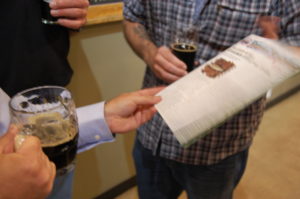
 There was no fish mortality documented from the spill, while bug sampling by an aquatic biologist with Mountain Studies Institute indicates a still thriving population of mayfly nymphs and caddis pupa. Colorado Parks and Wildlife (CPW) had installed pens of fingerling trout in the Animas before the plume arrived- and none of those fish died either. CPW ran an electro-shocking episode after the “Spill” with the usual re-capture protocol and got essentially the same results as the year before. Actually, the survey showed a slight improvement.
There was no fish mortality documented from the spill, while bug sampling by an aquatic biologist with Mountain Studies Institute indicates a still thriving population of mayfly nymphs and caddis pupa. Colorado Parks and Wildlife (CPW) had installed pens of fingerling trout in the Animas before the plume arrived- and none of those fish died either. CPW ran an electro-shocking episode after the “Spill” with the usual re-capture protocol and got essentially the same results as the year before. Actually, the survey showed a slight improvement. The Good Samaritan Legislation would address the current pollution clean-up laws in the United States. Currently, the Clean Water Act and the Comprehensive Environmental Response, Compensation, and Liability Act, place the clean-up burden on the property owners. But in the case of these abandoned mines, the owners are long-gone. Now the clean-up falls on the shoulders of Good Samaritans like TU and other partners. However, the liabilities in the laws- requiring a project to show significant improvements for a specific period of time and makes the Good Samaritan liable for any failures in improvements- have caused a legal gridlock.
The Good Samaritan Legislation would address the current pollution clean-up laws in the United States. Currently, the Clean Water Act and the Comprehensive Environmental Response, Compensation, and Liability Act, place the clean-up burden on the property owners. But in the case of these abandoned mines, the owners are long-gone. Now the clean-up falls on the shoulders of Good Samaritans like TU and other partners. However, the liabilities in the laws- requiring a project to show significant improvements for a specific period of time and makes the Good Samaritan liable for any failures in improvements- have caused a legal gridlock.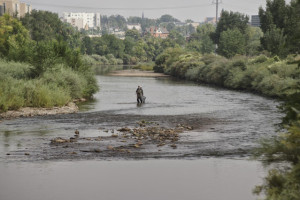 As the Denver Metro area continues to grow, the water needs rise with it and the unreliable flows from the South Platte River aren't enough to supply roughly 80% of the state's population with water throughout the year. Which is why water from the Upper Colorado River headwaters- in this case the Fraser River- are diverted for Front Range usage.
As the Denver Metro area continues to grow, the water needs rise with it and the unreliable flows from the South Platte River aren't enough to supply roughly 80% of the state's population with water throughout the year. Which is why water from the Upper Colorado River headwaters- in this case the Fraser River- are diverted for Front Range usage. Learning by Doing requires regular monitoring of stream temperature, riparian vegetation, and aquatic macro-invertebrates. If an environmental problem is detected, Denver Water will provide some financial support and additional flows to help solve the issue. This includes providing the flushing flows the river needs in the spring to clean sediment build up.
Learning by Doing requires regular monitoring of stream temperature, riparian vegetation, and aquatic macro-invertebrates. If an environmental problem is detected, Denver Water will provide some financial support and additional flows to help solve the issue. This includes providing the flushing flows the river needs in the spring to clean sediment build up.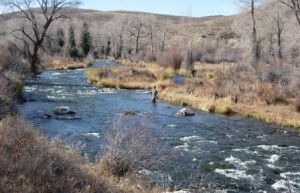 "This project strikes a necessary balance between the water needs of Front Range municipalities and the need to protect healthy flows and fish and wildlife habitat in the Fraser River," said David Nickum, Executive Director of Colorado TU. "The so-called “Learning by Doing” program in the proposal sets up a collaborative process that requires water users to monitor the health of the river in coming years and adjust operations to address unforeseen challenges and opportunities. Moreover, Denver Water has entered into partnerships on the Front Range to ensure that the project alleviates chronic low-flow problems in South Boulder Creek. Both sides of the Divide benefit.”
"This project strikes a necessary balance between the water needs of Front Range municipalities and the need to protect healthy flows and fish and wildlife habitat in the Fraser River," said David Nickum, Executive Director of Colorado TU. "The so-called “Learning by Doing” program in the proposal sets up a collaborative process that requires water users to monitor the health of the river in coming years and adjust operations to address unforeseen challenges and opportunities. Moreover, Denver Water has entered into partnerships on the Front Range to ensure that the project alleviates chronic low-flow problems in South Boulder Creek. Both sides of the Divide benefit.” Groups all over the state worked together to protect our state's water quality and our trout's quality of life. CTU hired water quality expert, Ashley Rust, as a consultant to provide technical support. Her work demonstrated flaws in the data selection and analysis used for the WQCD’s proposal. TU also worked with Colorado Parks and Wildlife scientists along with other organizations including Sierra Club, Colorado Wildlife Federation, CPW and EPA.
Groups all over the state worked together to protect our state's water quality and our trout's quality of life. CTU hired water quality expert, Ashley Rust, as a consultant to provide technical support. Her work demonstrated flaws in the data selection and analysis used for the WQCD’s proposal. TU also worked with Colorado Parks and Wildlife scientists along with other organizations including Sierra Club, Colorado Wildlife Federation, CPW and EPA.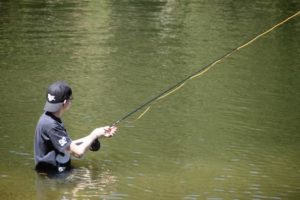 "Big thanks to John Woodling, who's testimony was a turning point in the hearing," said Whiting. "To Robin (Knox) who in 5 minutes conveyed a lifetime of experience- I loved the example of all the poor fish huddling in a small pool in the Yampa to avoid the hot water in response to the Division's callous assertion that if it's too hot, fish can just swim away. Big thanks to Dennis Buechler, who very softly and meekly brought in the impacts of these decisions on small businesses."
"Big thanks to John Woodling, who's testimony was a turning point in the hearing," said Whiting. "To Robin (Knox) who in 5 minutes conveyed a lifetime of experience- I loved the example of all the poor fish huddling in a small pool in the Yampa to avoid the hot water in response to the Division's callous assertion that if it's too hot, fish can just swim away. Big thanks to Dennis Buechler, who very softly and meekly brought in the impacts of these decisions on small businesses." Mely Whiting, lead negotiator for Trout Unlimited:
Mely Whiting, lead negotiator for Trout Unlimited:
